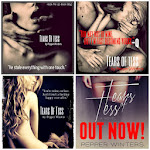Why Choosing Your Setting is Important
by Sharisse Coulter
Setting, not surprisingly, is a vital component in any story. It plays the role of a silent character, adding to the credibility of the narrative, providing texture and context. In some stories it features prominently, like Lord of the Rings or Harry Potter. In others, it is merely an afterthought. Or so it may seem.
Every choice an author makes to set a story in some time and place affects the underlying tone and feel of the story. Is it urban? Suburban? Remote? Small town? Foreign? What about climate? Is it an unforgiving landscape or a cozy retreat? Is it a familiar modern setting, or maybe dystopian, or even otherworldly? All these questions must be asked and answered in order to ground the narrative. For example, imagine what The Hunger Games would have been like set in modern day New York. Or Pride and Prejudice set in Cold War Moscow? It would significantly change the way the reader expected the story to play out.
Setting informs the reader how they should expect characters to speak, to interact with one another, whether to be on the edge of their seat or give them permission to relax and reflect. If, say, your characters are on a river raft heading toward a waterfall, it can add tension and suspense. Or you could have an emotional scene where a protagonist has just been fired over the phone while in a bounce house full of kids, providing levity. These may not be great examples, but they make the point.
In the best stories, the setting will work in constant cooperation with the characters and plot to ground the reader in time and place, while subtly directing their emotions. The best settings pull the reader in from all senses, almost without notice, that’s how engrossed they become in the story and its characters. It makes the story feel real, even in fantasy, and takes the reader on a sensory experience, making them “feel” the cold wind whipping their face, “hear” the leaves crackling beneath the feet, “smell” the freshly baked bread from the patisserie downstairs, “taste” the salty tears on their cheeks, and “see” the castle’s turret peeking through the clouds.
So the next time you sit down to write a story, think about the setting like a set designer for a film. Explore your setting through each of your senses, even if you don’t include all the details for your reader. Know how subtle changes in color, temperature, landscape and lighting will impact your story, and ask yourself: “Does it add to the story or take away from the mood?” If you, the writer, connect with your setting and make it “real” to you, then congratulations, you’re ready to take your reader and show them around.
Buy Now @ Amazon, Barnes & Noble & Kobo
Genre – Contemporary Women’s Fiction
Rating – PG13
More details about the book
Connect with Sharisse Coulter on Facebook & Twitter
Website http://leecoulter.com/tour/















0 comments:
Post a Comment